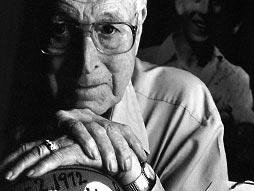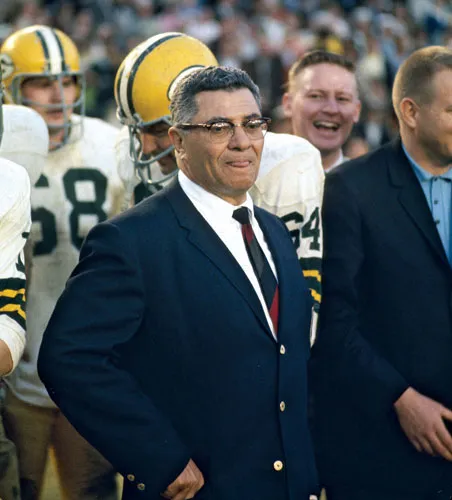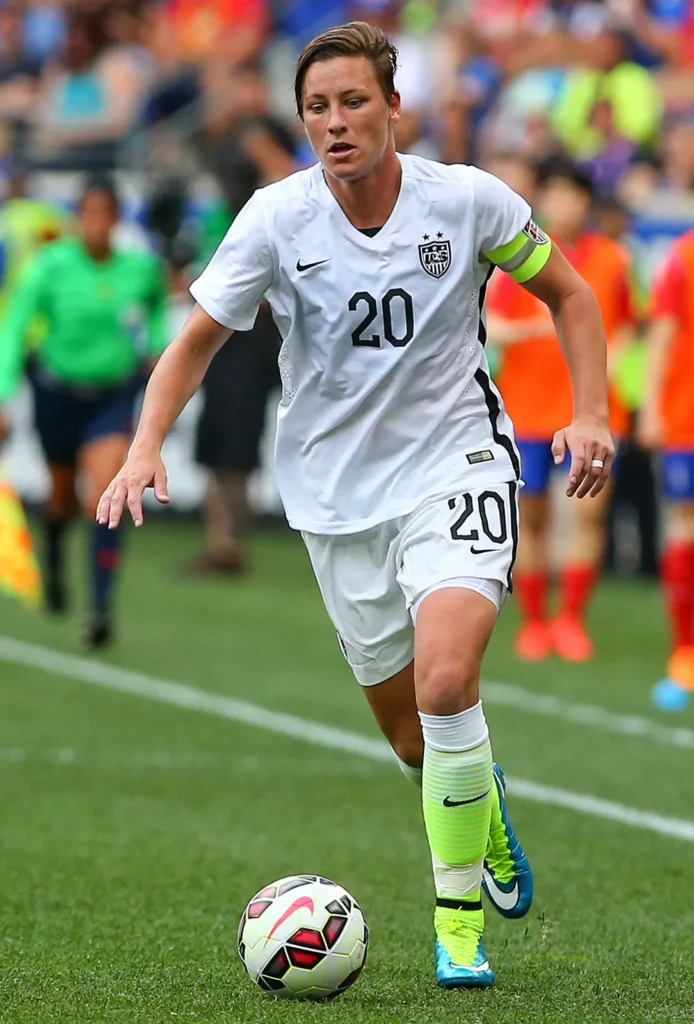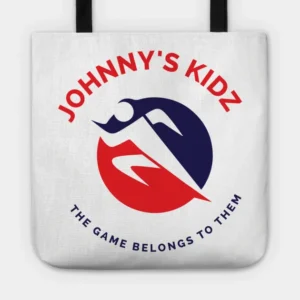Developing Leadership Skills in Young Athletes
Techniques for fostering leadership qualities and empowering youth to take on leadership roles within the team.
“Leadership is not about being in charge. It is about taking care of those in your charge.”
– Simon Sinek – Leadership Expert
Introduction
In youth sports, leadership skills are as vital as physical prowess.
These skills shape better athletes and contribute to young individuals’ personal growth and development.
As coaches and mentors, we have the unique opportunity to cultivate these qualities, transforming young athletes into confident leaders who can inspire their peers and navigate life’s challenges.
Leadership activities tailored for youth are essential because they provide a structured environment where young athletes can learn, practice, and refine their leadership abilities.
These activities encourage critical thinking, decision-making, teamwork, and communication—all fundamental aspects of effective leadership.
Incorporating these activities into our coaching routines, we help our young athletes understand the value of responsibility, accountability, and empathy.
But how do we translate these lofty ideals into practical, engaging activities? How can we ensure our efforts genuinely impact young athletes’ development?
The key lies in creating an environment that balances structure with flexibility, providing opportunities for leadership in various contexts, and fostering an atmosphere of support and encouragement.
In this guide, we’ll explore a range of leadership activities designed specifically for youth athletes.
From team-building exercises to individual challenges, we’ll cover strategies that have proven effective in nurturing leadership qualities.
Whether you’re a seasoned coach or just starting these insights and activities will equip you with the tools to inspire and empower the next generation of leaders.
Stay tuned as we delve into the specifics, sharing practical tips, real-world examples, and a dash of humor to keep things lively.
After all, leadership isn’t just about being serious—it’s about finding the balance between authoritative guidance and personal connection.
So, let’s dive in and start building the leaders of tomorrow today!

“The most powerful leadership tool you have is your own personal example.”
– John Wooden – Legendary Basketball Coach
Emphasizing Emotional Intelligence
The Importance of Emotional Intelligence in Leadership
Leadership isn’t just about making decisions and giving orders.
It’s about understanding and managing emotions – both your own and those of others.
This ability, known as emotional intelligence (EI), is a cornerstone of effective leadership.
Developing EI can lead to better communication, stronger relationships, and a more cohesive team environment for young athletes.
But what exactly makes EI so critical? Emotional intelligence allows leaders to:
- Recognize and understand their emotions, helping them maintain composure and make rational decisions under pressure.
- Perceive and interpret the emotions of others, fostering empathy and the ability to respond appropriately in various situations.
- Manage and resolve conflicts by addressing underlying emotional issues rather than surface-level disputes.
- Communicate effectively, ensuring their messages are clear, respectful, and impactful.
- Adapting to changing circumstances with resilience and flexibility are essential traits for any successful leader.
By cultivating EI, we equip our young athletes with the skills they need to lead with empathy, integrity, and confidence.
How Emotional Intelligence Enhances Key Leadership Skills
Communication Skills
Effective communication is the bedrock of leadership. EI enhances communication by enabling leaders to:
- Listen actively and understand others’ perspectives.
- Express their thoughts and feelings clearly without causing misunderstandings.
- Adjust their communication style to suit different situations and individuals.
Empathy
Empathy, a core component of EI, allows leaders to:
- Build strong relationships based on mutual respect and understanding.
- Motivate and inspire their teammates by addressing their needs and concerns.
- Create an inclusive and supportive team environment where everyone feels valued.
Conflict Resolution
Conflicts are inevitable in any team. Leaders with high EI can:
- Identify the root causes of conflicts, often linked to emotional undercurrents.
- Facilitate open and honest discussions, helping to resolve disputes amicably.
- Promote a culture of respect and understanding, reducing the frequency and intensity of conflicts.
Self-Awareness
Self-aware leaders:
- Recognize their strengths and weaknesses, allowing them to seek feedback and improve continuously.
- Maintain emotional control, preventing stress and frustration from impacting their decision-making.
- Reflect on their actions and behaviors, learning from their experiences to grow as leaders.
Adaptability
In sports, as in life, change is constant. Emotionally intelligent leaders can:
- Adapt to new challenges and opportunities with ease.
- Encourage their teammates to embrace change positively.
- Maintain team morale even during difficult transitions.
Examples of Activities to Develop Emotional Intelligence in Youth
Journaling
Encourage young athletes to keep a journal where they reflect on their emotions, thoughts, and experiences.
This practice promotes self-awareness and emotional regulation.
Role-Playing
Organize role-playing exercises that simulate common team scenarios, such as conflicts or high-pressure situations.
This helps athletes practice empathy, communication, and conflict resolution in a safe environment.
Team-Building Activities
Engage the team in activities that require cooperation, such as trust falls, obstacle courses, or group problem-solving tasks.
These activities build empathy, improve communication, and foster a sense of unity.
Mindfulness and Meditation
Introduce mindfulness and meditation practices to help athletes manage stress, enhance self-awareness, and maintain emotional balance.
Even a few minutes of daily mindfulness can significantly impact their emotional well-being.
Peer Feedback Sessions
Create opportunities for athletes to give and receive constructive feedback.
This encourages open communication, empathy, and self-awareness. Ensure that feedback is framed positively and focused on growth.
Emotional Check-Ins
Start practices or meetings with brief emotional check-ins, where each athlete shares their feelings.
This normalizes discussing emotions and helps the team develop empathy and support for one another.
Scenario Discussions
Discuss real-life or hypothetical scenarios where emotional intelligence was crucial in resolving issues or achieving success.
Analyze the emotional dynamics involved and extract lessons that can be applied to the team.
Leadership Rotations
Rotate leadership roles during practices or games, giving each athlete a chance to lead and experience the emotional challenges of leadership.
Provide support and feedback to help them grow in these roles.
By integrating these activities into your coaching routine, you can effectively nurture emotional intelligence in your young athletes, preparing them to be compassionate, resilient, and adaptable leaders.
“Leaders are made, they are not born. They are made by hard effort, which is the price all of us must pay to achieve any goal that is worthwhile.”
– Vince Lombardi – Renowned Football Coach

Promoting Inclusive Team Building
Benefits of Inclusive Team-Building Activities
Inclusive team-building activities are designed to unite everyone, regardless of their backgrounds, abilities, or roles.
These activities promote a sense of belonging and ensure every team member feels valued and respected.
The benefits of such activities are manifold:
- Enhanced Team Cohesion: Inclusive activities break down barriers, helping team members bond and work together more effectively.
- Improved Communication: These activities encourage open dialogue and understanding, facilitating better communication among team members.
- Increased Empathy: By involving everyone, inclusive team-building fosters empathy as team members learn to appreciate different perspectives and experiences.
- Boosted Morale: When everyone feels included, overall team morale and motivation increase, leading to better performance and satisfaction.
- Encouraged Innovation: Diversity of thought and experience can lead to more innovative solutions and ideas during team activities.
How Inclusive Team-Building Activities Foster Innovation, Empathy, and Collaboration
Innovation
Inclusive team-building activities bring together diverse individuals with unique perspectives and experiences.
This diversity catalyzes innovation, as it encourages out-of-the-box thinking and creative problem-solving.
When team members feel safe expressing their ideas and opinions, they are more likely to contribute novel solutions that might not have emerged in a more homogenous group.
Empathy
Empathy is a crucial element of strong leadership and effective teamwork.
Inclusive activities allow team members to imagine themselves in each other’s shoes, understand different viewpoints, and appreciate the challenges others may face.
This deepens their sense of empathy, creating a more supportive and compassionate team environment.
Collaboration
Effective collaboration hinges on trust and mutual respect.
Inclusive team-building activities build these foundations by fostering a sense of unity and shared purpose.
When team members feel included and valued, they are more willing to collaborate, share knowledge, and support one another in achieving common goals.
Examples of Inclusive Team-building Activities
Diversity Circles
In this activity, team members sit in a circle and share their personal stories, focusing on their backgrounds, cultures, and experiences.
This exercise promotes understanding and empathy, helping the team appreciate the diversity within their group.
Collaborative Art Projects
Engage the team in creating a large mural representing their collective identity.
Each team member contributes a piece, reflecting their individuality and how it fits into the larger team.
This fosters a sense of belonging and collaboration.
Group Problem-Solving Challenges
Present the team with a complex problem that requires diverse perspectives to solve.
Encourage them to work together, leveraging each member’s strengths and insights.
This activity highlights the value of diverse contributions and strengthens collaborative skills.
Inclusive Sports or Games
Organize sports or games emphasizing teamwork and inclusion, such as relay races, scavenger hunts, or cooperative board games.
Ensure that activities are accessible to everyone, considering different abilities and skill levels.
Storytelling Sessions
Host storytelling sessions where team members share experiences of overcoming challenges, achieving personal goals, or moments of pride.
This builds empathy and inspires and motivates the team by highlighting diverse journeys and accomplishments.
Peer Mentorship Programs
Establish peer mentorship programs where team members pair up to support each other’s development.
Mentors and mentees can share knowledge, provide feedback, and help each other navigate challenges.
This fosters a culture of mutual support and continuous learning.
Inclusive Decision-Making Workshops
Conduct workshops that focus on inclusive decision-making practices.
Teach team members to ensure everyone’s voice is heard and considered in group decisions.
Use real-life scenarios to practice these skills and demonstrate their impact on team dynamics.
Community Service Projects
Engage the team in community service projects that require them to work together towards a common goal.
This promotes teamwork and instills a sense of social responsibility and connection to the broader community.
Incorporating these inclusive team-building activities can create a more cohesive, empathetic, and innovative team environment.
These activities strengthen individual leadership skills and enhance the overall performance and unity of the team.

“The strength of the team is each individual member. The strength of each member is the team.”
– Phil Jackson – Legendary Basketball Coach
Providing Real-World Experiences
The Importance of Real-World Experiences for Practical Leadership Development
Real-world experiences are invaluable for developing practical leadership skills in young athletes.
While theoretical knowledge and controlled activities are essential, real-world experiences provide an unmatched depth of learning.
They expose athletes to authentic challenges and decisions, helping them to apply their skills in dynamic, unpredictable environments.
This hands-on approach fosters resilience, adaptability, and critical thinking.
When young leaders are thrust into real-world situations, they:
- Gain practical insights that can’t be replicated in a classroom or practice setting.
- Build confidence by handling real challenges and making impactful decisions.
- Learn from failures and successes, understanding the nuances of leadership in various contexts.
- Develop problem-solving skills by navigating complex, real-life scenarios.
- Enhance their ability to collaborate and communicate in high-stakes environments.
Types of Real-World Experiences
Project Management Training
Project management involves planning, executing, and overseeing projects to achieve specific goals.
In a sports context, this could involve organizing events, managing team logistics, or leading community initiatives.
This type of training develops organizational skills, time management, delegation, and leadership skills.
Examples:
- Organizing a Mini-Tournament: Tasking a young athlete with organizing a small tournament, including scheduling, coordinating with other teams, and managing resources.
- Community Service Projects: Leading a community service initiative, such as a charity run or a local sports clinic, to develop leadership and project management skills.
Situational Leadership Games
Situational leadership games simulate real-life scenarios in which young leaders must make quick decisions, resolve conflicts, and lead their teams effectively.
They are designed to test and improve leadership competencies in a controlled yet challenging environment.
Examples:
- Role-Playing Scenarios: Set up scenarios where athletes must lead a team through a crisis, such as handling an injured player during a game or resolving a team dispute.
- Leadership Challenges: Creating challenges that require strategic thinking and team coordination, such as escape rooms or survival games.
Examples and Case Studies
Example 1: Organizing a Charity Run
Description: A group of young athletes tasked with organizing a charity run to raise funds for a local cause, had to plan the route, coordinate with local authorities, manage registration, promote the event, and ensure the safety of participants.
Skills Developed:
- Project Management: Handling logistics, scheduling, and resource allocation.
- Communication: Promoting the event and coordinating with various stakeholders.
- Teamwork: Collaborating to ensure all aspects of the event were covered.
- Problem-Solving: Addressing unexpected issues, such as weather changes or last-minute cancellations.
Outcome: The event was a success, raising significant funds and providing the young leaders with a comprehensive experience in project management and teamwork.
They reported increased confidence and a better understanding of what it takes to lead a project from start to finish.
Example 2: Role-Playing Leadership in Crisis
Description: During a training camp, young athletes participate in role-playing exercises in which they manage a simulated crisis.
The scenario can involve an injured player who requires immediate medical attention and team reorganization during a game.
Skills Developed:
- Decision-Making: Making quick, effective decisions under pressure.
- Conflict Resolution: Addressing team concerns and ensuring morale remained high.
- Leadership: Taking charge and guiding the team through the crisis.
Outcome: The exercise highlights the importance of calm, decisive leadership.
Athletes learn to prioritize tasks, communicate effectively in stressful situations, and support their teammates.
A debriefing session provides valuable insights into their performance and areas for improvement.
Example 3: Leadership Rotations in Practice
Description: In a series of practices, each athlete can lead different aspects of the training session.
Responsibilities included planning drills, providing feedback, and motivating the team.
Skills Developed:
- Leadership Versatility: Adapting leadership style to different roles and tasks.
- Feedback Delivery: Learning to give constructive feedback to peers.
- Motivation Techniques: Finding effective ways to inspire and encourage teammates.
Outcome: Rotating leadership roles allows each athlete to experience the challenges and rewards of leading.
They develop a greater appreciation for the complexities of leadership and improve their ability to lead by example.
This practice also fosters a culture of mutual respect and understanding within the team.
Integrating these real-world experiences into youth sports programs gives young athletes the practical skills and confidence they need to become effective leaders.
These experiences enhance their athletic performance and prepare them for leadership roles in all areas of life.
“Leadership is standing next to those you are leading, not in front.”
– Abby Wambach – Soccer World Cup Champion

Leadership Development Activities for Kids and Teens
Specific Activities Tailored for Different Age Groups
Leadership development activities need to be age-appropriate, engaging, and effective in teaching essential leadership skills.
Here are some tailored activities for various age groups:
For Kids (Ages 6-10)
Activity: “Move the Egg”
Description: This activity involves moving an “egg” (a small ball or actual egg) from one point to another using only specific tools, such as spoons, sticks, or other objects.
Instructions:
- Divide the kids into small teams.
- Provide each team with an egg and their tools.
- Set up a course with start and endpoints.
- Each team must transport the egg from start to finish without dropping it, using only the tools provided.
Skills Developed:
- Teamwork: Kids must collaborate and communicate to achieve the goal.
- Problem-Solving: Finding creative ways to transport the egg without dropping it.
- Patience and Precision: Careful handling and strategic planning.
Activity: “Lead the Blindfolded”
Description: One child is blindfolded while another guides them through a simple obstacle course using only verbal instructions.
Instructions:
- Set up an obstacle course with cones, chairs, or other objects.
- Pair up the children.
- Blindfold one child in each pair.
- The other child must guide their blindfolded partner through the course using only verbal instructions.
Skills Developed:
- Communication: Clear and effective verbal instructions.
- Trust and Empathy: Understanding the importance of clear guidance and support.
- Leadership: Taking responsibility for guiding their partner safely.
For Preteens (Ages 11-13)
Activity: “Volunteer Roles”
Description: Assign preteens different roles in a volunteer project, such as organizing a local event or community clean-up.
Instructions:
- Identify a local volunteer opportunity suitable for the age group.
- Assign each child a specific role, such as leader, organizer, or coordinator.
- Provide guidelines and support as they plan and execute the project.
Skills Developed:
- Responsibility: Taking ownership of their assigned roles.
- Organization: Planning and executing tasks effectively.
- Community Engagement: Understanding the impact of their contributions on the community.
Activity: “Team Skits”
Description: Teams create and perform short skits based on leadership themes or scenarios.
Instructions:
- Divide the preteens into small groups.
- Provide them with a leadership theme or scenario (e.g., resolving a conflict or leading a team to victory).
- Give them time to create and rehearse their skits.
- Have each team perform their skit for the group.
Skills Developed:
- Creativity and Imagination: Develope unique skits based on the given theme.
- Public Speaking and Confidence: Performing in front of others.
- Leadership and Collaboration: Working together to create and present a cohesive performance.
For Teens (Ages 14-18)
Activity: “Leadership Panels”
Description: Teens participate in panels where they discuss leadership topics, share experiences, and answer questions from peers.
Instructions:
- Identify a leadership topic or series of topics relevant to the group.
- Select a panel of teen leaders to discuss these topics.
- Organize a panel discussion, encouraging audience questions and participation.
Skills Developed:
- Public Speaking: Articulating thoughts and experiences clearly.
- Critical Thinking: Engaging in meaningful discussions on leadership.
- Peer Learning: Learning from the experiences and insights of others.
Activity: “Situational Leadership Games”
Description: Teens are placed in simulated leadership situations where they must make decisions, lead teams, and solve problems.
Instructions:
- Develop scenarios that require leadership, such as crisis management or team coordination.
- Assign roles and responsibilities to each teen.
- Present the scenario and allow the teens to navigate it, make decisions and collaborate with their team.
Skills Developed:
- Decision-Making: Analyzing situations and making effective choices.
- Team Leadership: Leading a group through challenges.
- Adaptability: Adjusting to changing circumstances and unforeseen obstacles.
How These Activities Help in Practicing Leadership
Each activity is designed to provide hands-on experience in various aspects of leadership. Here’s how they help young athletes practice and develop leadership skills:
- Encourage Responsibility: Taking charge of tasks and roles teaches responsibility and accountability.
- Enhance Communication: Effective communication is crucial for all leadership activities. It helps articulate ideas and provide clear instructions.
- Promote Teamwork and Collaboration: Working in groups fosters a sense of unity and collaboration, which is essential for any leader.
- Develop Problem-Solving Skills: Facing challenges and finding solutions hones critical thinking and problem-solving abilities.
- Build Confidence: Successfully leading activities boosts self-confidence and prepares kids and teens for more significant leadership roles.
- Foster Empathy and Understanding: Activities requiring guidance and support help develop empathy and better understand others’ perspectives.
Engaging in these activities improves young athletes’ leadership skills and allows them to gain valuable life experiences that will benefit them in all areas of life.
Practical Strategies for Coaches
How Coaches Can Create Environments That Nurture Leadership Skills
Creating an environment that nurtures leadership skills requires intentionality and a supportive atmosphere.
Coaches are pivotal in shaping this environment, ensuring young athletes have the opportunities and resources to develop as leaders.
Foster a Culture of Respect and Inclusion
- Embrace Diversity: Encourage athletes to appreciate and respect differences. A diverse team brings a wealth of perspectives and experiences, which can enhance problem-solving and creativity.
- Model Respectful Behavior: Demonstrate respect in all interactions, setting a standard for athletes to follow. Address disrespectful behavior promptly and constructively.
Encourage Open Communication
- Promote Dialogue: Create an open-door policy where athletes feel comfortable sharing their thoughts and concerns. Regular team meetings can provide a platform for this.
- Active Listening: Show genuine interest in athletes’ ideas and feedback. This makes them feel valued and teaches the importance of listening as a leadership skill.
Provide Opportunities for Leadership
- Rotating Roles: Rotate leadership roles during practices and games, allowing all athletes to experience leading the team.
- Project-Based Leadership: Assign specific projects or tasks to athletes, such as organizing events or leading drills, to develop their leadership skills in a practical context.
Set Clear Expectations and Goals
- Define Leadership Qualities: Clearly articulate what leadership looks like within the team. Highlight qualities such as responsibility, integrity, and empathy.
- Goal Setting: Encourage athletes to set personal and team goals. Support achieving these goals, reinforcing the connection between leadership and goal achievement.
Create a Safe Environment for Learning and Growth
- Normalize Mistakes: Teach athletes that mistakes are part of the learning process. Encourage them to take risks and learn from their experiences.
- Provide Constructive Feedback: Offer specific, actionable feedback focused on improvement. Supportively celebrate successes and address areas for growth.
Tips and Best Practices for Implementing Leadership Activities in Sports and Other Contexts
Integrate Leadership Activities into Regular Practice
- Warm-Up Leadership Drills: Start practices with short leadership-focused activities, such as problem-solving tasks or communication exercises.
- Leadership Themes: Dedicate certain practices or sessions to specific leadership themes, such as teamwork, decision-making, or resilience.
Utilize Peer Learning and Mentorship
- Peer Mentorship Programs: Pair experienced athletes with newer team members. Mentors provide guidance and support, while mentees learn through observation and interaction.
- Leadership Committees: Form committees of athletes to take on leadership responsibilities for specific areas, such as team events, communication, or community outreach.
Encourage Reflective Practices
- Journaling: Encourage athletes to keep journals where they reflect on their leadership experiences, challenges, and growth.
- Debrief Sessions: After games or activities, hold debrief sessions where the team discusses what went well, what could be improved, and what leadership lessons were learned.
Connect Leadership Skills to Real-world Scenarios
- Guest Speakers: Invite guest speakers from various fields to discuss leadership and share their experiences.
- Field Trips: Organize visits to organizations or events where athletes can see leadership in action and draw parallels to their experiences.
Promote Community Involvement
- Service Projects: Involve the team in community service projects. These projects teach responsibility, empathy, and the importance of giving back.
- Community Leadership Roles: Encourage athletes to take on leadership roles in community organizations, such as youth clubs or volunteer groups.
Provide Continuous Support and Resources
- Leadership Workshops: Organize workshops focusing on developing specific leadership skills, such as public speaking, conflict resolution, or team building.
- Resource Libraries: Create a library of books, articles, and videos on leadership for athletes to explore independently.
Lead by Example
- Demonstrate Leadership: Coaches should model the leadership behaviors they want to see in their athletes. Consistency between words and actions builds credibility and trust.
- Share Personal Experiences: Share your leadership experiences, including challenges and successes. This personal touch can inspire and motivate athletes.
Best Practices for Implementation
- Start Small: Introduce leadership activities gradually. Begin with simple exercises and build up to more complex projects as athletes grow more comfortable and confident.
- Be Consistent: Consistency is key to developing leadership skills. Make leadership activities a regular coaching routine rather than one-off events.
- Adapt to Your Team: Tailor activities to fit your team’s needs, interests, and dynamics. What works for one group may need adjustment for another.
- Celebrate Progress: Recognize and celebrate both small and significant achievements in leadership. Acknowledgment reinforces positive behavior and encourages continued growth.
- Seek Feedback: Regularly ask your athletes for feedback on the leadership activities and their impact. Use this feedback to refine and improve your approach.
Coaches can significantly impact their athletes’ development by creating an environment that nurtures leadership skills and implementing these practical strategies.
The skills learned through these activities will enhance their performance on the field and prepare them for leadership roles in all aspects of their lives.

“Sport has the power to change the world. It has the power to inspire; it has the power to unite people in a way that little else does.”
– Nelson Mandela – Former President of South Africa
FAQ: Developing Leadership Skills in Young Athletes
What are the key benefits of developing leadership skills in young athletes?
Developing leadership skills in young athletes offers numerous benefits:
- Enhanced Team Cohesion: Better communication and understanding among team members.
- Improved Performance: Athletes who lead well often perform better individually and collectively.
- Personal Growth: Increases confidence, responsibility, and empathy.
- Life Skills: Prepares athletes for leadership roles beyond sports, in school, and future careers.
How can emotional intelligence be fostered in young athletes?
Emotional intelligence can be fostered through:
- Journaling: Reflecting on personal emotions and experiences.
- Role-Playing: Practicing empathy and communication in simulated scenarios.
- Mindfulness Practices: Encouraging self-awareness and emotional regulation.
- Peer Feedback Sessions: Sharing and receiving constructive feedback to develop empathy and communication skills.
What are some effective inclusive team-building activities?
Inclusive team-building activities include:
- Diversity Circles: Sharing personal stories to foster understanding and empathy.
- Collaborative Art Projects: Creating a team mural or collage to represent collective identity.
- Group Problem-Solving Challenges: Tackling complex problems that require diverse perspectives.
- Inclusive Sports or Games: Activities that are accessible and encourage teamwork.
Why are real-world experiences important for leadership development?
Real-world experiences are crucial because they:
- Provide Practical Insights: Hands-on experience in dealing with real challenges.
- Build Confidence: Handling real situations boosts self-esteem.
- Teach Resilience: Navigating real-world problems fosters adaptability.
- Enhance Problem-Solving Skills: Applying learned skills in dynamic, unpredictable environments.
What are some real-world leadership activities for young athletes?
Examples of real-world leadership activities include:
- Organizing a Charity Run: Handling logistics, promotion, and execution of a community event.
- Role-Playing Leadership in Crisis: Simulating crises to practice decision-making and conflict resolution.
- Leadership Rotations in Practice: Rotating leadership roles to give athletes experience leading different training session aspects.
How can coaches create environments that nurture leadership skills?
Coaches can create nurturing environments by:
- Fostering Respect and Inclusion: Embracing diversity and modeling respectful behavior.
- Encouraging Open Communication: Promoting dialogue and active listening.
- Providing Leadership Opportunities: Rotating roles and assigning leadership tasks.
- Setting Clear Expectations: Defining leadership qualities and encouraging goal setting.
- Creating a Safe Learning Environment: Normalizing mistakes and providing constructive feedback.
What are some best practices for implementing leadership activities?
Best practices include:
- Start Small: Introduce leadership activities gradually.
- Be Consistent: Make leadership activities a regular part of coaching.
- Adapt to Your Team: Tailor activities to your team’s needs and dynamics.
- Celebrate Progress: Recognize and celebrate achievements.
- Seek Feedback: Regularly ask for and incorporate feedback to improve activities.
How can coaches support continuous leadership development?
Coaches can support continuous development by:
- Organizing Workshops: Focusing on specific leadership skills.
- Creating Resource Libraries: Providing books, articles, and videos on leadership.
- Promoting Peer Learning: Encouraging mentorship and leadership committees.
- Connecting Skills to Real-World Scenarios: Bringing guest speakers and organizing field trips.
- Leading by Example: Demonstrating leadership behaviors and sharing personal experiences.
What are some specific leadership activities for different age groups?
Kids (Ages 6-10)
- Move the Egg: Enhances teamwork and problem-solving.
- Lead the Blindfolded: Develop communication and trust.
Preteens (Ages 11-13)
- Volunteer Roles: Teaches responsibility and organization.
- Team Skits: Fosters creativity and public speaking skills.
Teens (Ages 14-18)
- Leadership Panels: Enhances public speaking and critical thinking.
- Situational Leadership Games: Develops decision-making and adaptability.
These activities provide age-appropriate challenges and learning opportunities, ensuring young athletes can effectively develop leadership skills.
Conclusion: The Importance and Impact of Developing Leadership Skills in Youth
Developing leadership skills in youth is more than just an investment in their athletic careers; it’s an investment in their future.
Leadership activities provide young athletes with the tools they need to navigate life’s challenges on and off the field.
We foster responsibility, empathy, communication, and resilience to prepare them for leadership roles in various contexts.
Through structured activities and real-world experiences, young athletes learn to lead confidently and confidently.
These experiences shape their character, instill a sense of purpose, and build a foundation for lifelong success.
Whether they pursue leadership in sports, academics, or their professional lives, the skills they develop today will be a cornerstone for their future achievements.
In a world that increasingly values collaboration and innovation, nurturing leadership in youth is essential.
By creating environments that encourage growth and providing practical opportunities for leadership development, we equip the next generation with the capabilities to inspire, motivate, and lead.
These young leaders will drive positive change, build inclusive communities, and shape a better future for us all.
Call to Action
Join Coach Johnny in cultivating the next generation of youth sports athletes.
Now is the time to invest in the future of our young athletes by prioritizing leadership development.
As coaches, parents, and mentors, we have the power to shape the leaders of tomorrow.
Implement the strategies and activities discussed in this guide to foster leadership skills in your athletes.
Start small, be consistent, and adapt to the unique needs of your team.
Celebrate their progress and encourage continuous growth.
We can create an environment that builds better athletes and cultivates responsible, empathetic, and resilient leaders.
Take the first step today.
Introduce a new leadership activity in your next practice, organize a community service project, or discuss what it means to be a leader.
Every action counts, and every effort contributes to the development of our future leaders.
Let’s work together to empower our youth and inspire them to reach their full potential on and off the field.
Join us in this mission. Share your experiences, successes, and challenges with our community.
Together, we can learn, grow, and make a lasting impact on the lives of young athletes.
Your commitment to nurturing leadership skills will help shape a brighter, more inclusive future for everyone.
Nothing else we do can be more important.
Join the JK Tribe
Coach Johnny is a youth sports coach with over 30 years of experience. He continues to coach various sports in various age groups (pre-high school) for all genders. He is also the founder of Johnny’s Kidz and the JK Tribe. If you would like to support his journey and become a Tribe member, reach out and Buy Coach A Cup of Coffee.
Remember, The Game Belongs to Them!
DISCLOSURE: We often review or link to products and services we regularly use and think you might find helpful. We use referral links wherever possible, which means if you click one of the links in this video or description and make a purchase, we may receive a small commission or other compensation.
We’re big fans of Amazon, and many of our links to products/gear are to those products on Amazon. We participate in the Amazon Services LLC Associates Program, an affiliate advertising program designed to allow us to earn fees by linking to Amazon.com and related sites.

